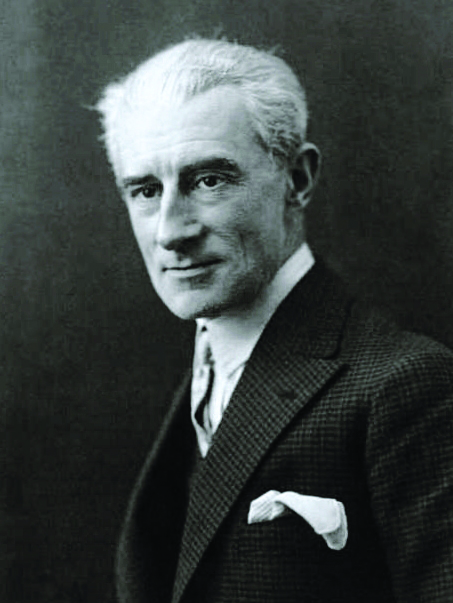LA VALSE: POÈME CHORÉGRAPHIQUE, FOR TWO PIANOS
Maurice Ravel
(b. Ciboure, France, March 7, 1875; d. Paris, December 28, 1937)
Composed 1919-20; 11 minutes
 La valse is a disturbing work, a product of the disturbing times in which Ravel worked on it. He began the score before the First World War as a symphonic poem to be called Wien (Vienna). “It is a grand waltz,” he wrote at the time, “a kind of homage to the memory of the great Strauss – not Richard – the other, Johann!” La valse only took its final form in 1920, when both Vienna and the world around Ravel himself were very different places. By 1920, Imperial Vienna had forever changed and Ravel’s attitude towards its ideals had been shaped by events in Europe. He dropped the original title of the piece and reworked its music as a ‘choreographic poem.’ He no longer referred to his score as an apotheosis of the Viennese waltz. Still, all the surface charm of the Straussian waltz appears to be present in La valse. But there are unsettling undertones and snatches of uneasy tension that couldn’t have been written before the war. The fantastic and fatal whirling seems to speak of narcissism and the end of an era. The typical Viennese ‘lift’ to the music seems ironic. The very bones of the waltz are laid out in front of us, picked over and fall apart, even as we listen. Diaghilev commissioned La valse from Ravel for his Ballets Russes. But he rejected the music with a perceptive comment: “It’s a masterpiece,” he said. “But it isn’t so much a ballet as the portrait of a ballet, a painting of a ballet." One side of the canvas is an impressionist representation of the waltz; the other is expressionist. Ravel himself completed the two-piano version while still working on the orchestration of the piece.
La valse is a disturbing work, a product of the disturbing times in which Ravel worked on it. He began the score before the First World War as a symphonic poem to be called Wien (Vienna). “It is a grand waltz,” he wrote at the time, “a kind of homage to the memory of the great Strauss – not Richard – the other, Johann!” La valse only took its final form in 1920, when both Vienna and the world around Ravel himself were very different places. By 1920, Imperial Vienna had forever changed and Ravel’s attitude towards its ideals had been shaped by events in Europe. He dropped the original title of the piece and reworked its music as a ‘choreographic poem.’ He no longer referred to his score as an apotheosis of the Viennese waltz. Still, all the surface charm of the Straussian waltz appears to be present in La valse. But there are unsettling undertones and snatches of uneasy tension that couldn’t have been written before the war. The fantastic and fatal whirling seems to speak of narcissism and the end of an era. The typical Viennese ‘lift’ to the music seems ironic. The very bones of the waltz are laid out in front of us, picked over and fall apart, even as we listen. Diaghilev commissioned La valse from Ravel for his Ballets Russes. But he rejected the music with a perceptive comment: “It’s a masterpiece,” he said. “But it isn’t so much a ballet as the portrait of a ballet, a painting of a ballet." One side of the canvas is an impressionist representation of the waltz; the other is expressionist. Ravel himself completed the two-piano version while still working on the orchestration of the piece.
— All program notes copyright © 2023 Keith Horner. Comments welcomed: khnotes@sympatico.ca
